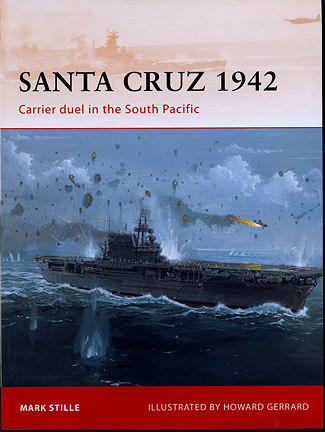 One
thing that WWII did in terms of naval strategy and tactics was to put an end to
the battleship as the king of the fleet. It did not stop nations from building
them, but their role had changed from the 'sharp end' of the spear, to a
supporting role as shore bombardment. Not that there were not ship vs ship gun
actions, but those were minimal.
One
thing that WWII did in terms of naval strategy and tactics was to put an end to
the battleship as the king of the fleet. It did not stop nations from building
them, but their role had changed from the 'sharp end' of the spear, to a
supporting role as shore bombardment. Not that there were not ship vs ship gun
actions, but those were minimal.
What became dominant was the aircraft carrier. Enough
airplanes could sink a ship, but an aircraft carrier was a rather vulnerable
target. It is interesting to note that in no case when a US carrier was hit with
a torpedo did it survive. Bombs, yes, but not a torpedo. The Japanese were
masters at torpedo warfare in the early war. They had the trained crews and some
wartime experience in China to draw upon. They also knew how to integrate their
attach forces and while their defensive cover was subject to issues as was seen
at Midway, the Japanese learned quickly.
The events of the 'forgotten carrier battle' at Santa
Cruz in late 1942 turned out to be the best result the Japanese had against US
forces and while a tactical victory, was a strategic loss. Much of this loss was
in aircraft and air crew. The Japanese lost a prodigious number of crew and
training new ones not only took a long time, but lost was the experience of
these crews. Not to say the US got away well in this regard, but they came off
better than the Japanese in terms of crew and aircraft loss. What's more, they
kept the Japanese from decimating Guadalcanal forces and pretty well turned the
tide of the campaign.
In this latest book in the Campaign series, author Mark
Stille takes a look at the evolving tactics and strategy of both sides during
these early war months and shows both the strengths and weaknesses of various
plans and tactics. The US, for instance, had very poor CAP control and even
worse tactics in terms of an integrated strike force. This led to only damaging
Japanese carriers while the Japanese sank one of the only two US carriers in the
Pacific at that time.
The book looks at the admirals involved in the
operations as well as their plans for the coming battle. We also get a look at
the tools of the battle, the aircraft and ships of the two sides. A pretty hefty
introduction to the battle is provided to show how tactics changed over time.
Then much is put into the campaign itself, looking at it from both sides.
Finally, we learn how this event affected future campaigns. As with all books in
this series, there are excellent period photos, including many taken during the
battles and the superb artwork of Howard Gerrard to add that much more to it.
If you want insight into an operation that has not really had
that much ' press', and you want a fascinating read, then this is the book for you. I thoroughly enjoyed
reading it and I'm sure you will as well.
November 2012
For more on the complete line of Osprey books,
visit www.ospreypublishing.com. In the US, it is
Osprey Direct at 44-02 23rd St, Suite 219, Long Island City, NY 11101., where you can
get a catalogue of available books.
If you would like your product reviewed fairly and quickly, please
contact
me or see other details in the Note to
Contributors.
 One
thing that WWII did in terms of naval strategy and tactics was to put an end to
the battleship as the king of the fleet. It did not stop nations from building
them, but their role had changed from the 'sharp end' of the spear, to a
supporting role as shore bombardment. Not that there were not ship vs ship gun
actions, but those were minimal.
One
thing that WWII did in terms of naval strategy and tactics was to put an end to
the battleship as the king of the fleet. It did not stop nations from building
them, but their role had changed from the 'sharp end' of the spear, to a
supporting role as shore bombardment. Not that there were not ship vs ship gun
actions, but those were minimal.